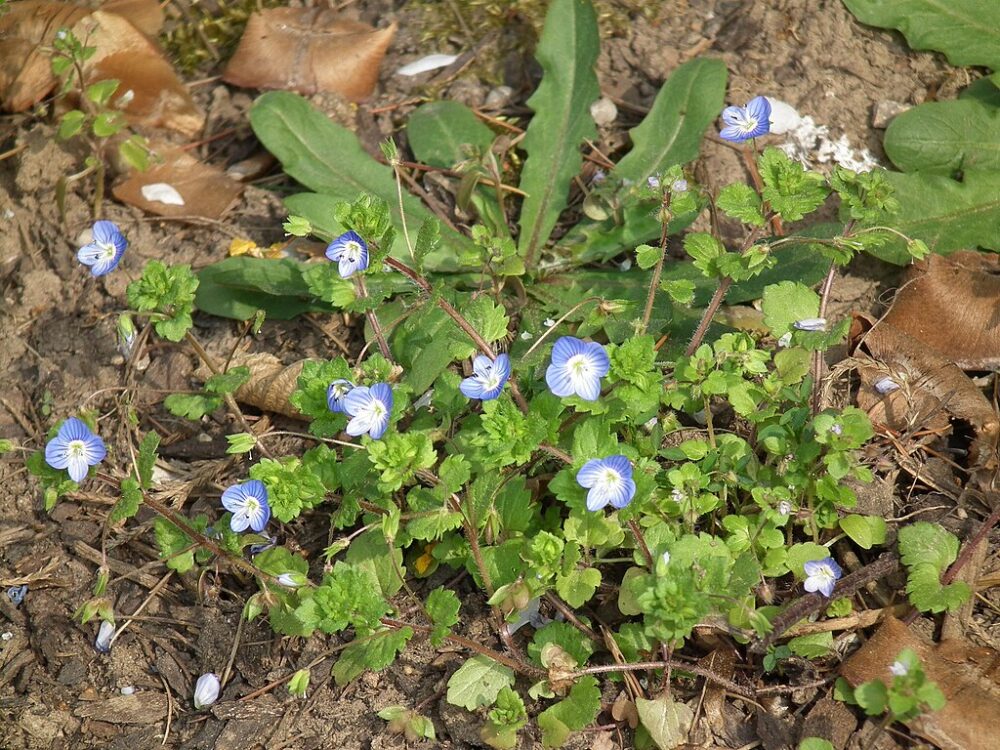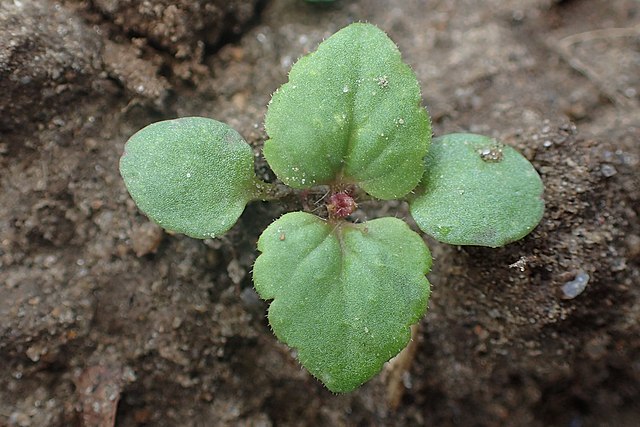Veronica persica (bird's eye speedwell) is a flowering, vascular plant native to Eurasia. You can also find it in North America, Australia, and New Zealand. This plant is edible and has quite a bitter taste. It was commonly made into syrups and elixirs. Today, one of the most common ways to consume Veronica Persica is as tea. You can also add it to smoothies, wild herb salads or stir fries.
There are a few rumors about how this plant got its name. Some say it is because it grows and spreads rapidly, and others claim that it will make you feel well quickly.
No matter what it is, this wildflower is worthy of study.
Discovering Veronica Persica
This plant is one of about 450 plants in the Veronica genus. This particular flowering, vascular plant was previously classified in the Scrophulariaceae family but is now part of the Plantaginaceae, or plantain family and in the Lamiales order.
What Are You Foraging For Right Now?
We're thrilled to hear your ideas. What would you like to submit today? Feel free to share your thoughts and experiences with us.
While the scientific name, Veronica persica, is easy enough to pronounce, the common name for this plant is birdseye speedwell or bird’s eye speedwell.
You will also commonly hear it referred to as:
- Persian speedwell
- Common field speedwell
- Large field speedwell
- Winter speedwell
- Bird’s eye
- Veronica persica poir
Two synonyms or previously common names for this plant are Pocilla persica and Veronica buxbaumbii.
Check our video below on how to identify Veronica persica in nature.
Where is Bird’s Eye Speedwell Native To?
This plant is originally native to Eurasia. It was first recorded in central Europe in 1805 and had made its way to the British Isles by 1825. Additionally, it was also recorded as growing wildly in northern Iran in 1826.
While it can still be found growing rapidly in Asia and Europe, today, you can also find it in North America, Australia, and New Zealand.
This wildflower is also common to see on the roadsides and supposedly wishes travelers good luck and speed.
In Scotland and Ireland, some travelers used to sew the speedwell into their clothing for luck and protection before heading out on a journey.

How to Identify Bird’s Eye Speedwell
This mat-forming perennial is bilaterally symmetrical. Each flower has four petals. The three upper petals are a sky blue/purple color, while the lower petal has more white mixed in, making it a pale blue color. All of the petals have dark stripes and meet together at the white center.
The flowers are quite small, especially when compared to the pedicels. The lower, seedling leaves are paired, while the upper leaves are alternately placed. All of the leaves are ovate, hairy, and have a serrated leaf margin and short petioles.
The plant usually only grows about two to six inches high but has the potential to grow even higher. The inflorescence of flowers is presented from the leaf axil on the upper portion of the stem.
One of the most distinguishing features of this plant is the heart-shaped fruit. The dry fruit is about five millimeters (0.19 inches) in length and has two lobes that are widely separated.



Is Bird’s Eye Speedwell Edible?
This plant is edible and has quite a bitter taste. The younger the plant, the less bitter the flavor.
All parts of the plant can be consumed – the leaves, the stems, and the flowers.
In the past, it was commonly made into syrups and elixirs. Today, one of the most common ways to consume Veronica persica is as tea.
More kitchen uses:
- The flowers are often used as decorative, edible culinary accents.
- The leaves and shoots can also be cooked down like collard greens.
- Young, tender leaves and shoots are great, vitamin-rich additions to salads and smoothies.
Note: In rare cases, bird’s eye speedwell has caused nausea and vomiting when over-consumed.

How to Make Speedwell Tea
Veronica persica tea is prepared from the whole, flowering, fresh or dried herb.
- put 2 teaspoons in a tea strainer in a cup
- dash with boiling water
- let steep for 5 minutes
Other wild edible medicinal teas you may be interested in include:
Veronica Persica: Medicinal Uses
With over 200 years of popularity, bird’s eye speedwell has been used in many different ways. As I mentioned before, the flowers can be used as a garnish, and the leaves and shoots can be cooked down or added to smoothies, salads, or stir-fried.
It has a handful of antioxidants, is said to work as an expectorant and diuretic, has antibacterial properties, reduces inflammation, and is said to help detoxify your body by increasing sweat production.
Medically, it is rumored to help with many ailments and health disorders.
It has said to be useful for:
- Snakebite treatments
- Rheumatism
- Lung and respiratory diseases
- Cough
- Blood purification
- Stress and anxiety
- Urinary tract infections
- Skin rashes
- Gall stones
- Asthma
- Sore or swollen eyes
- Digestive health
- Sore throat
- Liver health and general body detox
Where & When to Forage for Veronica Persica?
Where:
You’ll commonly find it in fields, lawns, roadsides, turf, waste areas, and probably even in your own yard.
This plant is not very picky. It reproduces from seed and grows so wildly and quickly that some people actually consider it to be a weed.
It thrives in partial or full sun in moist loamy, sandy, or clay soil. The pH of the soil does not make much of a difference – anything from neutral to acidic is okay for the bird’s eye speedwell.
When:
It grows rapidly from late winter to early spring or summer. It roots from nodes in the soil.
Foraging is best when the plant is actively growing and producing flowers. This is usually in spring and early summer.
Is Veronica Persica Invasive?
Yes, bird’s eye speedwell is considered invasive in many regions. This plant has a tendency to spread rapidly and outcompete native vegetation.
Practical Foraging Tips
Luckily, you don’t need to go deep or far to find V. persica.
- It can be found in the most unlikely of places due to the fact it spreads quickly and grows well in different soils and levels of sunlight.
- Look for small blue flowers with four petals arranged in a cross shape, opposite leaves that are toothed, and a low-growing, mat-like growth habit.
- Look for common field-speedwell along paths, trails, or walkways where the ground may be disturbed.
- The plant has no thorns or spines and is not known to be toxic to humans or animals. It is easy enough to take a few trimmings from the vines or stems.
- As always, forage plants from areas that are free from pesticides and fertilizers, especially if you plan to topically use or consume them. Before using it, wash or rinse it also.
- Anytime you use a wild plant as a medicinal or nutritional supplement, it is best to consult a doctor before consuming it.
While there are many people who swear by the wonders of these natural products, the majority of them have not been approved by the FDA.
Originally from Florida, but with a lust for travel, Sami has found herself in many remote areas with little-to-no access to traditional medicines. Since 2014, she has been experimenting with natural remedies, eastern medicine, and foraging. She believes that the Earth provides us with everything we need to live, heal, and cure.

